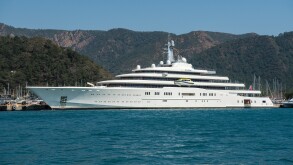There is no such thing as a quiet year for China's tax system.
The fifth edition of KPMG's China – Looking Ahead guide shows that all parts of the system covered in previous versions of this publication underwent change in 2015 and more is on the way. For example, Announcement 7 has replaced Circular 698 as the definitive word on the reporting and taxation of indirect offshore disposals, the Special Tax Adjustments discussion draft, covering new transfer pricing guidance and controlled-foreign-company rules, is expected to be finalised before the end of the year, and the transition from Business Tax to a national VAT is expected to be completed in 2016.
Many of the changes are, of course, inspired by, if not taken directly from, the OECD's Base Erosion and Profit Shifting (BEPS) Action Plan, whose final recommendations came out in September 2015. China will have a particularly important role to play in the implementation of the plan in 2016 as president of the G20 group of the world's biggest economies, which commissioned the OECD to reform the international tax system in 2012.
China will be in the global tax politics and diplomacy spotlight for another reason next year. It hosts the next meeting of the OECD-organised Forum on Tax Administration, when more than 100 tax commissioners from around the world will meet in Beijing to discuss ever-constant priorities such as how they can cooperate more and better, and how to resolve disputes quicker and more efficiently.
China wants to use these responsibilities to make a real impact on international tax, but it reserves the right, as it has made clear many times previously, to sculpt any measures according to the needs of its own tax system and economy. For example, it has decided not to adopt, for now, the BEPS proposals on interest deductions and value chain apportionment, the SAT's new transfer pricing method, is nowhere to be seen in the BEPS action plan.
So what does this all mean? It means, to borrow a phrase from a different time, an international tax system in China with Chinese characteristics. It is a situation that taxpayers everywhere will have to monitor closely and we hope the fifth edition of KPMG's China – Looking Ahead will be a valuable tool in helping them do this.
Ralph Cunningham
Managing editor
International Tax Review









